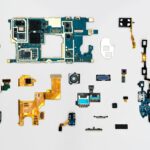What Are Lithium Batteries?
Lithium batteries are a type of rechargeable battery that uses lithium ions as the primary charge carrier. They are widely used in various applications due to their high energy density, lightweight nature, and ability to retain a charge over a long period.
It is projected that between 2022 and 2030, the global demand for lithium-ion batteries will increase almost seven-fold, reaching 4.7 terawatt-hours in 2030.
Here’s a closer look at their key features and components:
Types of Lithium Batteries
- Lithium-Ion (Li-ion): These are the most common type of lithium battery used in consumer electronics, electric vehicles, and renewable energy storage. They have high energy density and are known for their longevity and efficiency.
- Lithium Polymer (LiPo): These batteries use a polymer electrolyte instead of a liquid one, allowing for flexible shapes and sizes. They are often used in applications where weight and space are critical, such as in drones and smartphones.
- Lithium Iron Phosphate (LiFePO4): Known for their thermal stability and safety, these batteries are used in applications that require high current and long cycle life, such as in electric vehicles and stationary energy storage.
What Are Lithium Batteries Used For?
Lithium batteries are commonly used in a variety of products, including electric vehicles, ebikes, e scooters, laptops, portable electronics such as mobile phones and solar power systems. They are favoured for their longevity and performance, making them a popular choice in modern electrical items.
What Are The Benefits Of Lithium Batteries?
High Energy Density: Lithium batteries can store more energy per unit of weight compared to other battery technologies, making them ideal for portable electronics and electric vehicles.
Long Cycle Life: They can be charged and discharged hundreds to thousands of times without significant degradation.
Low Self-Discharge Rate: Lithium batteries lose charge slowly when not in use, making them suitable for devices that require long standby times.
Who Invented The Lithium Ion Battery?
Stanley Whittingham in the 1970s was the first to develop a rechargeable lithium battery concept. He discovered that titanium disulfide (TiS₂) could be used as a cathode material because it could easily store lithium ions between its layers.
In 1980, John Goodenough, a physicist and chemist, discovered that lithium cobalt oxide (LiCoO₂) could be used as a cathode material. This discovery significantly improved the energy density of the battery, making it a practical solution for consumer electronics.
How Do You Dispose Of Lithium Batteries?
At Collect and Recycle, we specialise in recycling lithium batteries. We collect battery waste across the UK for businesses, ensuring it is safely disposed of for businesses. Our ADR verified team will safely collect and transport your waste to licensed treatment and recycling facilities. This ensures they can be handled in accordance with UK regulations and guidelines.


